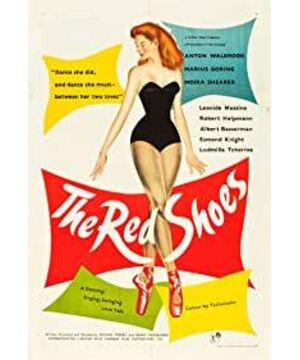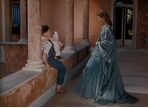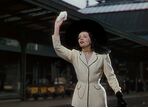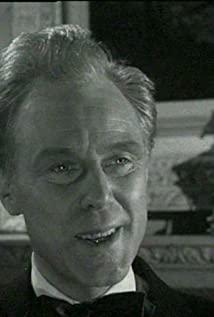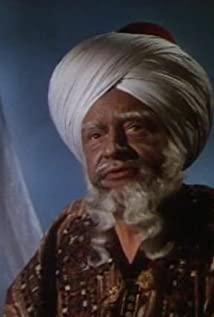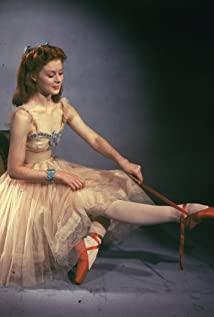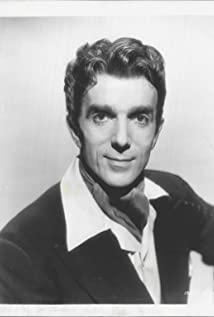Of all the movies I like to immerse myself in, "Hong Lingyan" ranks high. Roger Ebert said it best: "You're not watching, you're there." It's the ultimate dream of color and light, and a work of cinema that's timeless. If you haven't seen the movie, it's like Black Swan or the original version of Crazy Drummer. He explores man's fascination with art and the devastation that comes with it. It's a film about passion, and passion exudes in every frame, thanks in large part to the director and writers. They wanted something less realistic to make the overall look of the film more free and dreamy, not like the traditional Hollywood musical of the time. In order to realize this vision, they hired painter Haiying He Cross as art director. And give him the highest authority, let him use his imagination. The film also presents a completely expressionist form. As can be seen from the 17-minute ballet segment in the film, the audience disappeared, the spotlight disappeared, and an inner world that transcended the boundaries of the stage was slowly revealed. In order to present this state, the painter used nearly 200 sketches to form a mirror, in which he could see all the fantasies he pursued. But the most striking element of these sketches and feature films is the consistent burst of color that can be seen in the frame. Powell and Pisberg are no strangers to bold experiments with color. "Hong Lingyan" is an extension of every frame of sensory experience in "Black Narcissus". It also follows the practice of splitting heaven and earth into black and white and color as in "Place in the Sky", which further highlights the role of color. What is captured and presented is not reality, but an impression, he said. Hercross was in charge of the design, but the photographer, Jack Cardiff, was the one who shot it. And he did it through the classic three-color ribbon process of color film. This technology is astounding because of the clarity and saturation of the colors. The process of the three-color ribbon comes from this 500-pound mechanical monster, a giant camera with a beamsplitter inside. This beam splitter can expose three strips of film simultaneously. One is sensitive to green light, and the other two are sensitive to blue and red light. After shooting, all three negatives are printed under a special substrate film. The film bleeds into complementary pigments, with the red band in cyan, the green band in magenta, and the blue band in yellow. A fourth strip of black and white film that touches the full receiver to absorb each color of the original three films. All in all, this is a complex, technically expensive process to make. But the results it presents are impeccable. It's easy to see why "Hong Lingyan" is considered one of the best color photography ever made. The four producers work together to create an atmosphere where he is relaxed and in control in the system. He's not reborn and then maintaining 100% color intensity all the time. Unlike Powell and Pisberg, the later work The tales of Hoffman 1951). The latter's candy store-like hues are so saturated that they're a bit dazzling. On the contrary, the color of Hongling Yanzhong is as important as the main character, and it changes with the development of the plot. Just like the ballet in the film, which combines reality and fantasy, the plot of the film also develops from further reality to fantasy. The color of the picture also faithfully reflects this change. From cloudy England, earthy tones under the skies, to vibrant blues and yellows in the bright light of Monte Carlo. This change can be seen everywhere. Think about the moment before Vicky was voted Ballet 05, she came out like a fairy tale, she appeared like a star. Because this is Vicky's moment. For Vicky, the moment was like a dream, like magic. Consider Gormantov, the persistent and domineering ballet director. He's never dressed like this in this scene. When alone, he is often in dim light in blue-gray tones. Like a vampire. It also seemed to match his pale skin in the bright light. When he was angry, he was surrounded by reddish-brown. Obviously, that's what the movie title presents, the most obvious color. The reds in this film are at a level unmatched in film craftsmanship. Obviously, there are many interpretations of the film's connotations. Because red is shaped as the core image of the film. It's hideous letters, it's sex drive, it's anger, it's madness. This is an alluring color. The power tormented the dancing Vicky, in a contrasting white dress. But when I rewatched Hong Lingyan, I found something new, the use of this red color in the whole movie is actually quite restrained. In most scenes, there is almost no red in the lighting and set-up. Even in the dance sequence of "Hong Lingyan", only a few shots appear red. Most of the time, you only see a small amount of red. Also just in the background, or in the corners of the screen. Red striped skirt, passing bus, red roses, conductor's tuxedo. And of course Moira Sheila's red hair, which I think was intentional. Many great directors of this period used red very sparingly, which may be a little strange compared to "Hong Lingyan", but let's take a look at the works of Japanese film master Yasujiro Kojing. He doesn't have many works of color films, but In the few dramas, he always embellished with sporadic red. On the costumes, sets, props are, and often, a carefully arranged red teapot. Powell and Pisberg are like Yasujiro Ozu. There may be no dramatic meaning to this elaborate display, but it does help to bring a more vivid charm to a particular work, a kind of integrity and completeness of the story. . But I love seeing red everywhere, lurking somewhere in the background. Just like the red dancing shoes themselves, even if they are not worn, these shoes always haunt Vicky's mind, enticing her every step of the way. Together they create a fantastical visual spectacle that is not reality, but somewhere close to it, a great example of using the screen as a canvas rather than a notepad. It also uses color as a visual effect, as it does with any model miniature or computer-generated image. Because color is a visual effect. It makes you unable to extricate yourself and just want to sink deep into it. If you also see such a pair of red shoes, please go the other way.
View more about The Red Shoes reviews


